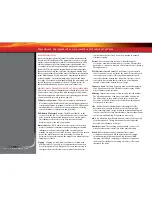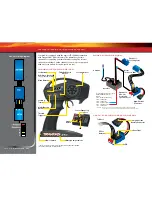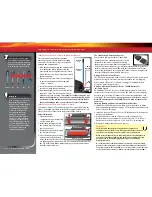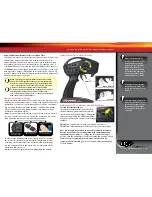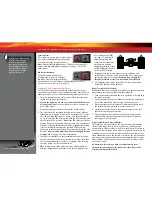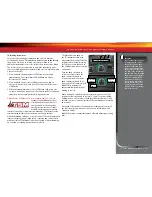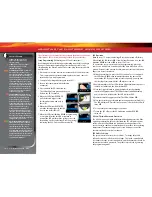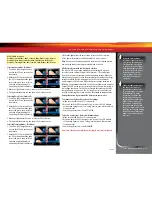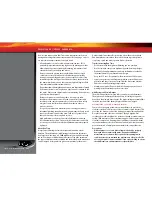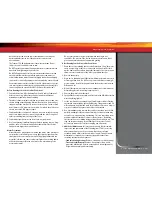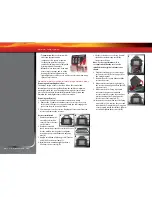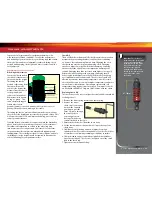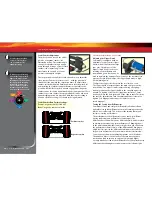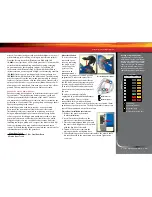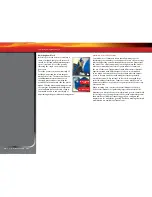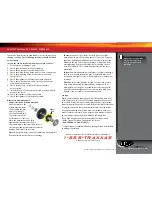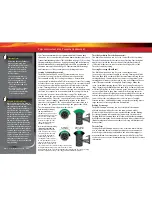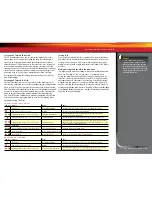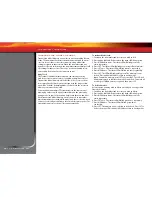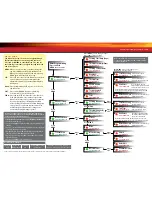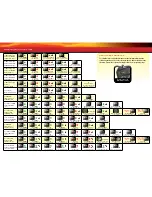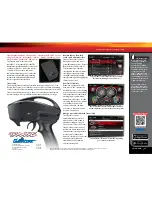
22 • 1/16 SUMMIT VXL
A camber gauge (available
at your local hobby shop)
can be a useful tool for
alignment setting.
To achieve a good starting
point for the slipper clutch,
tighten the slipper clutch
adjusting nut clockwise until
the slipper clutch adjusting
spring fully collapses (do
not over tighten), and then
turn the slipper clutch nut
counterclockwise
¾
to 1 turn.
Static Camber Adjustment
The wheels can be set to have either
positive or negative camber (see
illustration below). The camber angle
changes as the wheel moves up and
down through its range of travel. Static
camber is the camber angle at the
wheel when the vehicle is set at its
normal, stationary ride height.
The suspension pivot balls located in the axle carriers adjust the
static camber. Camber is factory-set at -1°, with the pivot balls
threaded all the way into the suspension arms. To adjust static
camber, insert the supplied 2mm hex wrench into the pivot ball
(compressing the suspension until the arms are parallel to the
ground will allow for easier hex wrench engagement). Negative
camber can be increased by unthreading the lower pivot ball. Zero
camber or positive camber (not recommended) can be achieved
by unthreading the upper pivot ball. Note that camber changes
will also effect the toe angle of the wheel being adjusted.
Static Camber Base Factory Settings
Front:
1° negative camber each side
Rear:
1° negative camber each side
TRANSMISSION TUNING
Adjusting the Slipper Clutch
Your model is equipped with an
adjustable Torque Control slipper
clutch, which is built into the large
spur gear. The purpose of the
slipper clutch is to prevent over-
stressing of the drivetrain and
transmission gears. It may also be
used to regulate the amount of power sent to the rear wheels to
prevent tire spin. When it slips, the slipper clutch makes a high-
pitch, whining noise.
To adjust the slipper clutch, remove the receiver box cover.
The slipper clutch is integrated into the main spur gear on the
transmission. The slipper clutch is adjusted using the spring-
loaded locknut on the slipper shaft. Use the supplied universal
wrench. To tighten or loosen the slipper nut, insert the 1.5mm
hex wrench into the hole in the end of the slipper shaft. This locks
the shaft for adjustments. Turn the adjustment nut clockwise to
tighten (less slippage) and counterclockwise to loosen
(more slippage).
Tuning the Sealed Gear Differentials
Your model’s front and rear gear differentials allow the left and
right wheels to spin at different speeds while turning so that the
tires do not scuff or skid. This decreases the turning radius and
increases steering performance.
The performance of the differentials can be tuned for different
driving conditions and performance requirements. The
differentials are filled with silicone differential fluid, and are sealed
to maintain consistent long-term performance. Changing the oil
in the differential with either lower or higher viscosity oil will vary
the performance characteristics of the differentials. Changing to
a higher viscosity oil in the differential will reduce the tendency
for power to be transferred to the wheel with the least traction.
You may notice this when making sharp turns on slick surfaces.
The unloaded wheels on the inside of the turn have the least
traction and tend to spin up to extremely high rpms. Higher
viscosity (thicker) oil causes the differential to act like a limited-slip
differential, distributing more equal power to the left and right
TUNING ADJUSTMENTS
Positive camber
Negative camber

